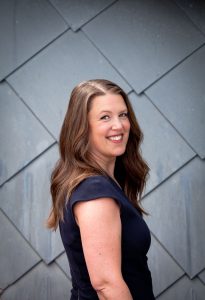The Power Of Regret written by John Jantsch read more at Duct Tape Marketing
Marketing Podcast with Daniel Pink
 In this episode of the Duct Tape Marketing Podcast, I interview Daniel Pink. Daniel is the author of five New York Times bestsellers, including his latest, The Power of Regret: How Looking Backward Moves Us Forward, published in February. His other books include the New York Times bestsellers When and A Whole New Mind — as well as the #1 New York Times bestsellers Drive and To Sell is Human. Dan’s books have won multiple awards, have been translated into 42 languages, and have sold millions of copies around the world. He lives in Washington, DC, with his family.
In this episode of the Duct Tape Marketing Podcast, I interview Daniel Pink. Daniel is the author of five New York Times bestsellers, including his latest, The Power of Regret: How Looking Backward Moves Us Forward, published in February. His other books include the New York Times bestsellers When and A Whole New Mind — as well as the #1 New York Times bestsellers Drive and To Sell is Human. Dan’s books have won multiple awards, have been translated into 42 languages, and have sold millions of copies around the world. He lives in Washington, DC, with his family.


Key Takeaway:
Everybody has regrets — it’s human. Understanding how regret works can help us make smarter decisions, perform better at work and school, and bring greater meaning to our lives. In this episode, 5-time NYT best-selling author, Daniel Pink, joins me to talk about the power of regret and how looking backward can actually move us forward in life. Daniel debunks the myth of the “no regrets” philosophy of life through his research in social psychology, neuroscience, and biology.
Questions I ask Daniel Pink:
- [2:37] How does one really conduct research on regret?
- [3:44] Are there were differences between the world product and the American product?
- [4:53] There are posters and tattoos around the world that say no regrets, so how is this a positive thing?
- [6:49] Are you saying that people make mistakes and learn from them?
- [7:42] How did you land on this particular topic?
- [11:44] Could you define what regret is and how it differs from disappointment and guilt?
- [16:51] Could you walk us through the four categories of regret: foundation, boldness, moral, and connection?
- [19:35] Does the demographic data show that older people have different regrets or bigger regrets than younger people?
- [22:41] How does the research you’ve done connect with or have a relationship with mental health?
- [25:49] Where can people learn more about you, your book, and your work?
More About Daniel Pink:
Take The Marketing Assessment:
Like this show? Click on over and give us a review on iTunes, please!
This episode of the Duct Tape Marketing Podcast is brought to you by the HubSpot Podcast Network and Zapier.

HubSpot Podcast Network is the audio destination for business professionals who seek the best education and inspiration on how to grow a business.
 Do you ever wish there was some way to get all those apps you use at work to talk to each other? Or dreamed about automating routine tasks like following up with marketing leads or cross-posting on social channels—without having to hire a developer to build something for you? Then you’ll love Zapier. Zapier helps marketers make the most of the technology you already use. Connect all your apps, automate routine tasks, and streamline your workflow—so you can convert more, with less chaos. See for yourself why teams at Airtable, Dropbox, HubSpot, Zendesk, and thousands of other companies use Zapier every day to automate their businesses. Try Zapier for free today at zapier.com/DTM.
Do you ever wish there was some way to get all those apps you use at work to talk to each other? Or dreamed about automating routine tasks like following up with marketing leads or cross-posting on social channels—without having to hire a developer to build something for you? Then you’ll love Zapier. Zapier helps marketers make the most of the technology you already use. Connect all your apps, automate routine tasks, and streamline your workflow—so you can convert more, with less chaos. See for yourself why teams at Airtable, Dropbox, HubSpot, Zendesk, and thousands of other companies use Zapier every day to automate their businesses. Try Zapier for free today at zapier.com/DTM.
 In this episode of the
In this episode of the 


 In this episode of the
In this episode of the 
 In this episode of the
In this episode of the  In this episode of the
In this episode of the 
 In this episode of the
In this episode of the